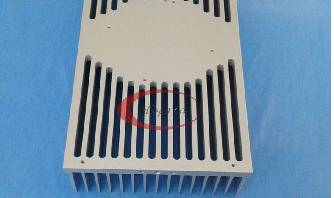The role of the high-power radiator is to absorb the heat of all kinds of high-power devices and then diverge to the equipment or equipment, to ensure the normal temperature of equipment components. The heat sink can be manufactured using a variety of materials, and each material has a different thermal conductivity, which is arranged from high to low, including silver, copper, aluminium, and steel.
What are the characteristics of various materials for high-power radiators?
Aluminium radiator: Due to the characteristics of raw materials and manufacturing processes, aluminium radiators are relatively inexpensive and cost-effective. At the same time, the aluminium profile heat sink also has good heat dissipation performance, fast heat dissipation and lightweight.
Steel radiators: Various shapes and rich colours. This type of radiator is generally used for home heating. Our Donghao radiator does not produce such products.
Steel-aluminium composite radiator: Our copper-aluminium composite products are mainly used in heat pipe radiators. Heat pipes can be buried on the basis of ordinary profile radiators, which greatly improves the heat dissipation performance. There is also a copper-aluminium composite liquid-cooled radiator, which can be embedded with copper tubes on the basis of a water-cooled plate radiator to further improve heat dissipation performance.
Aluminum extrusion heat sink, a variety of chemical elements do their best:
Our custom aluminum extrusion large heatsink is suitable for a variety of high-power devices, such as IGBT, SVG, SVC, APF, MOS tube, power regulator, soft starter, inverter, inverter, etc. Wait.
01.Si
Al-Si alloy system. The solubility of silicon in the solid solution can reach 1.65%, and the aluminium-silicon alloy has excellent casting properties and corrosion resistance.
02.Magnesium Mg
Al-Mg alloy system. The solubility of magnesium in aluminium decreases with temperature, but in most industrially deformed aluminium alloys, these alloys cannot be strengthened by heat treatment, but have good weldability and good corrosion resistance.

Aluminum Extrusion Heat Sink
03.Manganese Mn
Al-Mn alloy system. The solubility of manganese in solid solution can reach 1.82%. The strength of the alloy increases with increasing solubility. Al-Mn alloy is a non-aging hardening alloy, that is, it cannot be strengthened by heat treatment.
04.Zn
Al-Zn alloy system. The solubility of zinc in an aluminum can reach 31.6%. When zinc and magnesium are added to aluminium at the same time, a strengthening phase Mg / Zn2 is formed, which can significantly strengthen the alloy.
In addition to the above elements, 6063 aluminium alloy also contains iron Fe, copper Cu, chromium Cr, titanium Ti and so on. It is the various elements that do their best. Using their functional characteristics, combined with our R & D design, production and processing, the extrusion aluminum profile heat sink can take advantage of high-power heat dissipation and is widely used. In the new energy, power supply, welding machine and other industries.